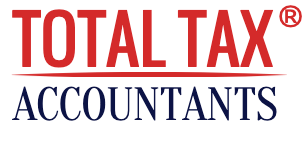Preparation of Financial Statements: What information should be gathered?

The annual production of financial statements serves a dual purpose. On the one hand, it is a legal obligation, and on the other hand, these summary documents make it possible to analyze the accounts in order to know the financial health of an organization. As a tool for measuring the evolution of the activity and comparison with previous years, they can be transmitted to certain external users for information purposes. A true management tool, financial statements also enable executives to make informed decisions. But what information should be gathered for the preparation of the financial statements of a company for company accounts?
The Elements Needed to Draw up the Balance Sheet
Like a snapshot of the company’s situation, the balance sheet provides a vision of the financial health of the organization at the end of the year. It includes the following information:
- The financial structure and assets of the company at the end of the financial year.
- Shareholders’ equity and debts owed to third parties
- Working capital as well as how to finance the development of the company
- Investments made
- Cash availability
In summary, the balance sheet summarizes the elements providing information on the solvency, health and financial means available to a company.
The Information Contained in the Income Statement
The income statement allows for a close-up view of the revenues, expenses and results generated by the company during the past financial year. It offers a more detailed vision than the balance sheet of the distribution of expenses and products, by dividing them by type: operating, financial or exceptional. It includes:
- Purchases of materials
- Stock status
- Other purchases and external charges
- Taxes
- Staff costs
- Financial expenses
- Exceptional charges
- The subsidies
- Immobilized production
- The current work
The income statement provides the operating, financial and exceptional results and measures the performance of the company by service, as well as the value added created.
The Statement of Changes in the Financial Position
Although the production of this document is not mandatory, the use of this statement tends to be generalized, because it offers valuable information about the company and in particular a vision:
- The activity, financing and investments of the organization
- Cash flow from the past year
- The origin and destination of funds
- Accounts payable and receivable
- The solvency and the cash of the company
- Its ability to raise funds internally, pay off debt and reinvest
Depending on the scope of the audit, the accountant is frequently required to prepare a report in addition to the financial statements . This may be a reader’s opinion, a review engagement report or an independent auditor’s report, three analyzes with a different level of credibility, but all of which facilitate the understanding of the balance sheet and income statement.
It should be noted, however, that while the information in the financial statements helps to form a good idea of a company’s financial position, it does not provide any extrafinancial information. For example, they do not detect other elements that could jeopardize the sustainability of the company, such as unsuitable management or aging equipment.


